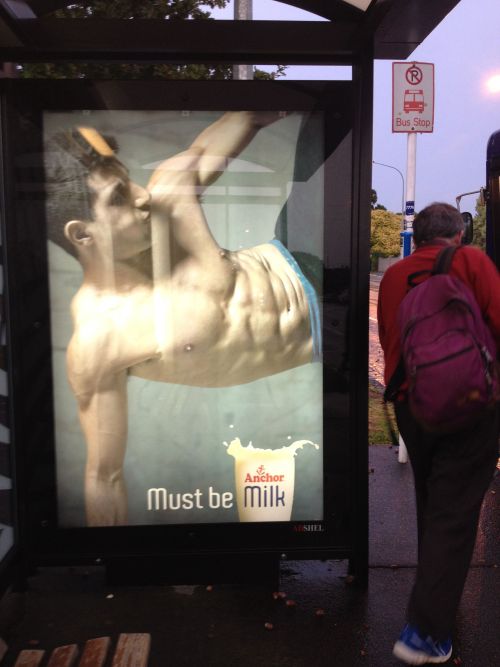
I’m very wary of dairy advertising. At $13.7 billion worth of exports the dairy industry is hailed as the heart of our country’s economy, so I don’t think they want anyone to know about the dark side of their ‘white gold’.
What dark side?
How about the fact that, despite everything we’re told about calcium, ‘the countries with the lowest milk consumption have the lowest risk of osteoporosis and fractures’? How about all the studies that have disproved the supposed benefits of cow’s milk / proved that cow’s milk actually leads to increased bone fracture and osteoporosis? The connection between milk consumption and type 1 diabetes? Acne? Intestinal bleeding in infants? ‘There is absolutely no biological requirement for milk.’ (Huffington Post: Got Proof?)
However, of course, the information promoted by dairy companies is entirely in their favour. Milk is great source of protein! (Yeah, because baby cows need to grow a lot more than baby humans. Obesity epidemic? No connection!) According to Anchor’s website: High quality dairy protein containing all 20 amino acids, means dairy products can be a one-stop shop for protein!
The dairy industry doesn’t want us to know about the connection between high consumption of animal proteins and cancer (four times more likely - the same risk as smoking!) : a connection that “almost vanished when the researchers considered participants whose protein mainly came from plants, such as beans.” (Cell Metabolism journal, March 4.)
Which makes me think about other studies which have proved that industry-funded research is ‘4-8 times more favourable to the financial interests of the sponsors.’ (see ‘Relationship between funding source and conclusion among nutrition-related scientific articles.’)
This stuff doesn’t get a lot of attention from NZ’s media. Granted, stuff.co.nz posted the article, the NZ herald posted this one where Professor Plant talks about drawing the connection between a traditional asian diet and low rates of breast cancer in China (“Chinese women had historically very low rates of breast cancer: one epidemiological study from the 70s showed the disease affected one in 100,000 Chinese women, compared with one in 12 in the West” … “at that time they did not have a dairy industry. It was a revelation.”) Which reminds me of another book, The China Study (full text).
Milk can double risk of early death.
High milk intake and increased mortality.
But the casein in dairy milk, ‘a slow-release protein that can sustain you for longer’ (Anchor’s website) contains casomorphins which act like opiates in your bloodstream. Dairy is actually addictive.
But on the whole, New Zealanders are consuming less milk, so there’s a lot of advertising around right now to try and reverse that trend. Fonterra’s “milk for schools” campaign was a case in point. And bus stops all over Auckland are currently plastered with the rippling abs of a muscular male dancer with the caption, ‘Must be milk’ (Right! We need animal protein! Protein is good! Milk will make you strong and attractive!)


Is it OK for children to drink something biologically tailored for newborns of another species? Do we think about what we’re really consuming, how it’s from the lactating teat of a mother? Is that really masculine, like the posters in the bus stop would have you believe? Should we be forking out more and more money for a product that scientists are likening with tobacco?
Dairy milk is made for calves, not for kids. Not for adults either. Not for humans in general.
These are the things I’m thinking about when I do stupid drawings like these.